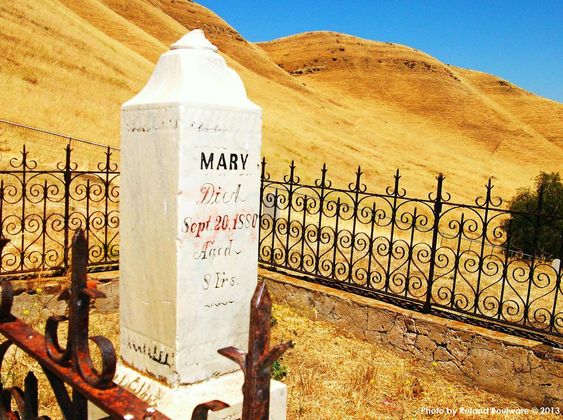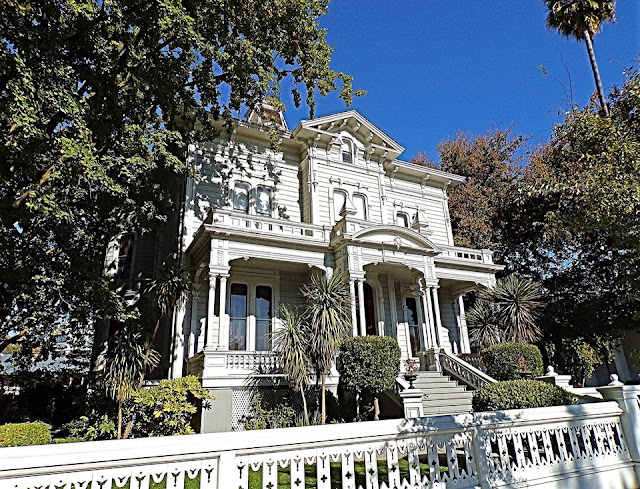(Copyright 2020 - Roland Boulware)
The Road Less Traveled - Photography By Roland Boulware
Wednesday, January 22, 2020
Black Diamond Mines Regional Preserve, Contra Costa County
Black Diamond Mines Regional Preserve - This park contains the remains of what was once a prosperous mining area. At one time, this area originally known as the Mount Diablo Coalfield was home to 12 active coal mines: The Black Diamond, Mt. Hope, Cumberland, Eureka, Independent, Pittsburg, Star, Corcoran, Central, Union, Manhattan and Empire. Just up the hill to the west sits the old Rose Hill Cemetery which has close to 200 former residents interred there.
ALL PHOTOGRAPHY IS COPYRIGHTED BY THE PHOTOGRAPHER, ROLAND BOULWARE
(Copyright 2020 - Roland Boulware)
(Copyright 2020 - Roland Boulware)
The McHenry Mansion, Modesto, California
The McHenry Mansion, located at 906 15th Street in Modesto, is a Victorian-Italianate home originally built in 1883 for Robert McHenry (Robert Henry Brewster) who was a rancher, banker and eventually a politician. Robert lived here with his wife, Matilda.
After Robert died in 1890, and Matilda died in 1896, their son Oramil and his wife Louise decided to live there with their children. Eventually Oramil and his wife would divorce. Oramil would end up keeping their sons, while Louise took their daughter. Sadly, their little girl died from burns she suffered in her hotel room at the Hollenbeck Hotel in Los Angeles. Oramil later remarried in 1902 but lived only 4 more years, dying in 1906. Afterwards, his 2nd wife inherited it.
The house would go through several transformations, from the Elmwood Sanitarium in 1919, to the Langdon Apartments, named after Oramil's 2nd wife's 2nd husband, William Langdon. Eventually the home had went into such disrepair over the years until the Julio R. Gallo Foundation purchased the home to preserve it back to the way it was when Robert McHenry lived in it.
ALL PHOTOGRAPHY IS COPYRIGHTED BY THE PHOTOGRAPHER, ROLAND BOULWARE
(Copyright 2020 - Roland Boulware)
Sutter Creek Grammar School
The original Sutter Creek Grammar School was built in 1857 but burned down in a fire in 1870. This second structure built on the same site was constructed in 1871. This is said to be one of the last two-story brick schoolhouses of this size and scale left in the Motherlode, the other being the schoolhouse in Columbia.
ALL PHOTOGRAPHY IS COPYRIGHTED BY THE PHOTOGRAPHER, ROLAND BOULWARE
(Copyright 2020 - Roland Boulware)
ALL PHOTOGRAPHY IS COPYRIGHTED BY THE PHOTOGRAPHER, ROLAND BOULWARE
(Copyright 2020 - Roland Boulware)
Dunsmuir House, Oakland, California
Located in a secluded spot in Oakland, the Dunsmuir house was built in 1899 by J. Eugene Freeman. Built for Alexander Dunsmuir, the son of a rich coal baron from Vancouver, British Columbia.
The house was a "wedding gift" to his bride, Josephine, but he never got to enjoy it as he passed away on January 31, 1900 on their honeymoon while in Manhattan. His wife came back to the home to live out the rest of her days,which was only about a year later, when she also fell ill and passed away on June 23, 1901.
Rumors that the newlywed couple dying so quickly after building the home has sparked legend and lore around the home's history. The truth of the matter was, the couple were not really newlyweds at all. Josephine and Alexander had been "playing house" for over 18 years before they actually married. He was afraid of his father's disapproval of the union so he kept it a secret. Alexander waited until his father died to allow their affair to be announced.
It was said that he was also afraid his mother, and that she too would disinherit him if she knew about his union, so he had planned on keeping it a secret indefinitely. Somehow, word got out so he made it official and married her properly. Sadly, the two never got to enjoy proper married life together.--
ALL PHOTOGRAPHY IS COPYRIGHTED BY THE PHOTOGRAPHER : ROLAND BOULWARE
(Copyright 2020 - Roland Boulware)
Sunday, January 21, 2018
Uncovering a Mystery at Columbia Cemetery
 |
| Grave of Jacob R. Giddis (Photo: Roland Boulware) |
His body was brought back to Columbia and he was buried beside his friend, Joel Cumback who had died just four years earlier. After looking into the story further, it appears that Joel and Jacob more than likely came over to California together, as they were both from Morris County, New Jersey and both arrived around the same time. In fact, the odds are that they knew each other growing up, and their families were probably close friends. The towns of Randolph (where Jacob was from) and Chester (where Joel was from) are literally a few miles away from one another.
It is unknown what Joel died from back in 1857, though it could have been any number of reasons such as tuberculosis, typhoid, small pox, measles, etc. Whatever the case, Joel's childhood friend, Jacob Giddis paid for and had erected the headstone you see below. For miners this is not uncommon to have a gravestone marked by a friend, or even mentioning the friend who commissioned the headstone for the deceased. Many times that was the only friend they had nearby, so that was a way of making sure that it was known that he was not alone, that he had friends there to make sure he was buried properly and not forgotten.
Sadly, Jacob lost his life just four years later when he was brutally murdered. Obviously the locals in town or even perhaps his employer must have took up a collection to have Jacob buried and afforded him the chance to have a proper burial and headstone, just like he had done for his friend.
(Copyright 2018- Roland Boulware)
 |
| Graves of: Jacob R. Giddis and Joel A. Cumback (Photo: Roland Boulware) |
Thursday, January 18, 2018
San Andreas
Originally settled around 1848, and named after St. Andrew, the town of San Andreas itself was not formed until 1853, after a large underground river channel proved to be full of gold. The infamous "gentleman bandit" Black Bart is remembered for his trial here at the Calaveras County courthouse in 1883. He was convicted and sent to San Quentin for six years. His whereabouts after his release remain a mystery to this day.
Sunday, January 7, 2018
Moss Beach, Half Moon Bay, California
Moss Beach, located in Half Moon Bay, California is a widely known historic spot where the Moss Beach Distillery sits atop the cliff side overlooking the pacific coastline. The historic Moss Beach Distillery, now a restaurant, dates back to the Prohibition era, when rum running, bootlegging and other illegal practices were going on under the cover of darkness. This location is said to be the haunting ground of a "woman in blue" or "blue lady" who may or may not have perished over the cliff during the speakeasy's early days.
(Copyright, 2015 - Roland J. Boulware, All Rights Reserved.)
Subscribe to:
Posts (Atom)
-
The original Sutter Creek Grammar School was built in 1857 but burned down in a fire in 1870. This second structure built on the same site w...
-
The McHenry Mansion, located at 906 15th Street in Modesto, is a Victorian-Italianate home originally built in 1883 for Robert McHenry (Rob...
-
Located in a secluded spot in Oakland, the Dunsmuir house was built in 1899 by J. Eugene Freeman. Built for Alexander Dunsmuir, the son of ...










































